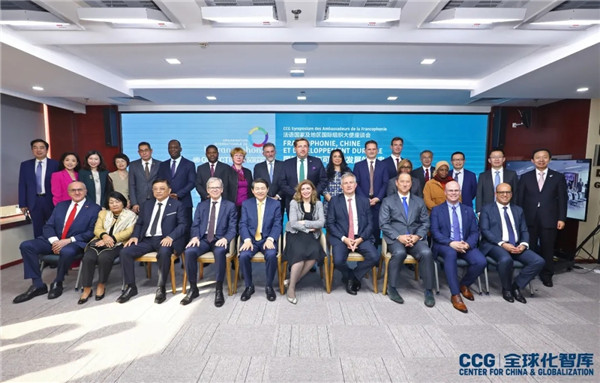CCG Ambassador’s Roundtable Series “China and Pacific Alliance”
December 13 , 2021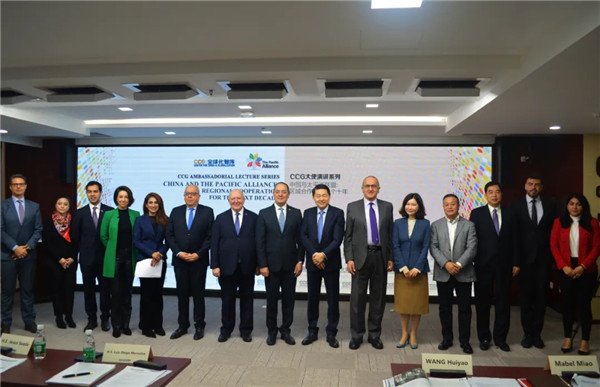
On December 13, 2021, the Center for China and Globalization (CCG) held the CCG Ambassador’s Roundtable Series “China and Pacific Alliance: The Next Decade of Regional Cooperation” at its headquarters in Beijing.
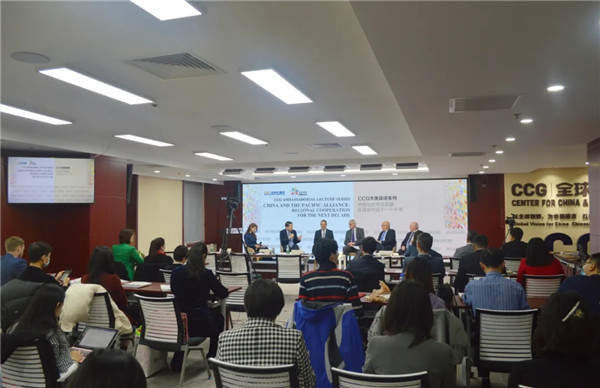
Colombian Ambassador to China H.E. Luis Diego Monsalve, Mexican Ambassador to China H.E. Jesus Seade, Peruvian Ambassador to China H.E. Luis Quesada, Chilean Ambassador to China H.E. Luis Schmidt and CCG President Wang Huiyao jointly delivered speeches on China’s regional cooperation with the Pacific Alliance.
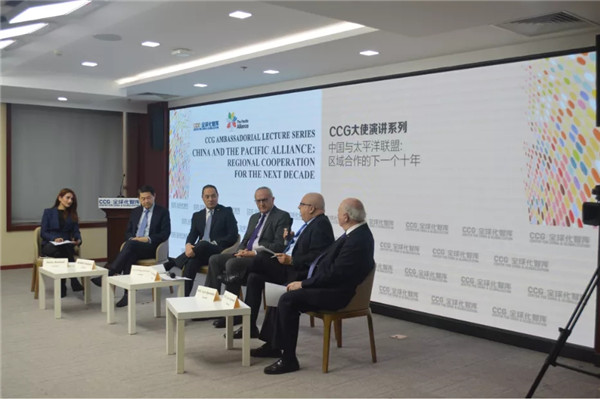
After that, participants had a round-table discussion on the future development of regional economic cooperative agreements such as the Comprehensive and Progressive Trans-Pacific Partnership Agreement (CPTPP), the Belt and Road Initiative (BRI) and the Pacific Alliance’s Strategic Vision for 2030. The talk was moderated by CCG Research Fellow Zoon Ahmed.
The Pacific Alliance (PA) is a regional trade bloc launched in 2011 that includes Chile, Colombia, Mexico, and Peru as well as 59 observer states. With a combined population of 230 million and an average per capita GDP of USD19,000, the Alliance is now the 8th largest exporter in the world. Striving for economic integration with the Asia Pacific region in an era of increasing protectionism, the bloc concluded FTA negotiations with Singapore in July. China is a key trading partner of Latin America and the Caribbean (LAC) as China-LAC trade grew 26-fold over the last two decades and is expected to more than double by 2035.
In the past two decades, as the largest export market and an important trading partner of Latin America and the Caribbean, China’s commercial relationship with the Pacific Alliance has developed vigorously. However, with the prevalence of trade protectionism, regional cooperation has become difficult. Against this background, CCG held an event to celebrate the 10th anniversary of the founding of the Pacific Alliance, to deepen China’s understanding of Pacific Alliance countries and Latin America and to promote mutual understanding among all parties.
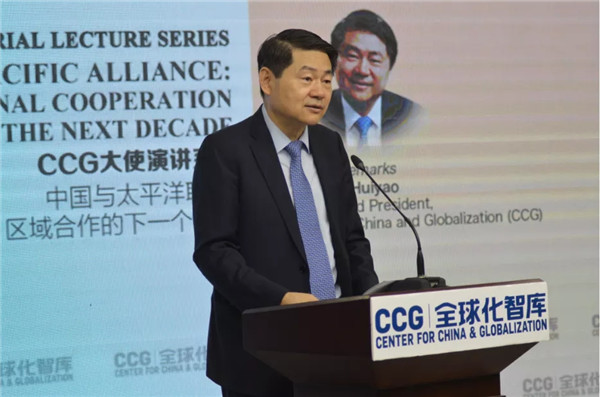
As Dr. Wang Huiyao said in his opening speech, this event was of great significance in promoting understanding of Pacific Alliance member states and further stimulating potential trade cooperation between China and Latin America.
In his speech, Wang Huiyao pointed out that trade between China and Latin America can be traced back to the 16th century. Now China is one of the most important trade partners of Latin American and Caribbean countries. Despite the severe impact of the pandemic on global trade, bilateral trade relations still shown a growth trend. Both China and the PA member states have the will to promote inclusive multilateralism. For example, China is currently applying for the membership in the CPTPP. Among the four PA member countries, Mexico, Peru, and Chile are members of CPTPP. They all hold a positive and open attitude towards China’s membership in CPTPP. Another five CPTPP member states are PA observer states. It can be said that PA has established close ties with all parties in trans-Pacific economic and trade cooperation. In the implementation of the BRI, Colombia, Peru, Mexico, Chile, and other countries have also carried out close cooperation with China. In the future, China and PA member countries will expand their cooperation areas and achieve better regional development.

H.E. Luis Diego Monsalve, Colombian ambassador to China, introduced the background and objectives of the PA. He said that the Pacific Alliance is committed to deep regional integration and prosperity and development. Main objectives include establishing a deeply integrated area to promote the free exchange of goods, services, capital and people; promoting member countries to achieve better and more inclusive economic growth and development; striving to become a platform for economic and trade integration, and enhancing the importance of the Pacific Alliance for member countries and the whole world.
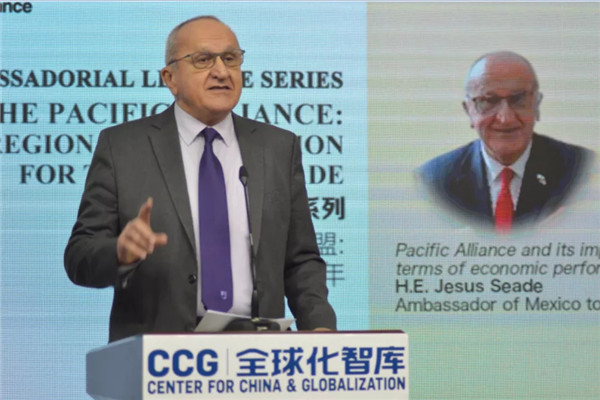
Mexican Ambassador to China H.E. Jesus Seade commented on the importance of the PA in global economic performance. He said that huge population, large total GDP, and vibrant trade gives the Asia-Pacific region a pivotal position in global development. In addition, he also mentioned that CPTPP and the Regional Comprehensive Economic Partnership Agreement (RCEP) are more comprehensive and progressive trade agreements. Against this background, the PA will play a more important role in the Asia-Pacific region and member countries will have more room for development. At the same time, the development of the region, including China, will also provide the whole world with more opportunities for cooperation and exchange.
In September this year, Mexican Foreign Minister and Chinese State Councillor and Foreign Minister Wang Yi welcomed China’s application to join CPTPP.

H.E. Luis Quesada, the Peruvian ambassador to China, introduced the achievements of the PA in the past decade. He said that in the past decade, regardless of changes in administration or foreign policy, one of the greatest achievements of Pacific Alliance member countries has been to maintain a close and effective regional union. In the short time since its establishment, the Pacific Alliance has made remarkable achievements in fields such as promoting trade development, human mobility, and sharing science and technology.
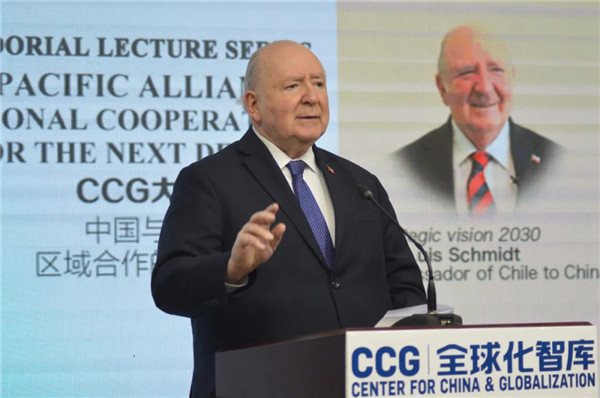
H.E. Luis Schmidt, Chile’s ambassador to China, gave an outlook on the Pacific Alliance’s strategic vision for 2030. He said that in order to continuously promote and consolidate the deep integration of Pacific Alliance member states, stimulate growth and achieve the goal of sustainable development, the Pacific Alliance would take “more integration”, “more goals”, “more contact” and “more private exchange” as important criteria for achieving a freer flow of goods, services, capital and people by 2030. At the same time, as China has become a strategic partner, Pacific Alliance member states also hope to cooperate with China to create a better future.

During the round-table discussion, Dr. Wang Huiyao also said that for China, joining the multilateral trade agreement CPTPP can effectively strengthen ties between China and Pacific Alliance countries. The Colombian ambassador to China, the Mexican ambassador to China, the Peruvian ambassador to China, the Chilean ambassador to China and Dr. Wang Huiyao jointly said that CPTPP, as a high-standard trading system for the 21st century, is very attractive to China, and that China’s accession to CPTPP is conducive to deepening regional cooperation and promoting trade exchanges and interaction in the Asia-Pacific region.
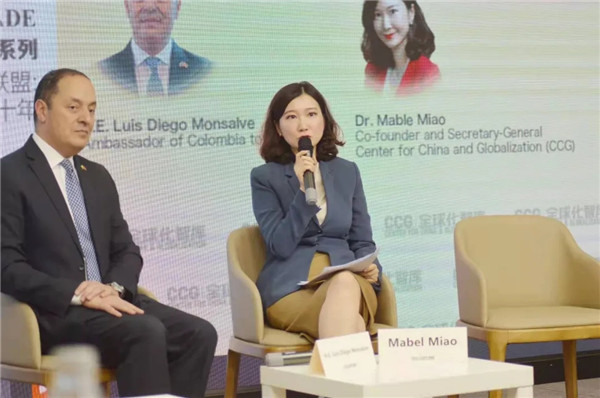
At the end of the event, Dr. Mabel Miao, Secretary General of the CCG, delivered a closing speech. Dr. Mabel Miao said that the Pacific Alliance has strengthened trade and cultural exchanges between regions. As a strategic partner, China hopes to make joint efforts with PA member states to further promote people-to-people exchanges in the region. For example, the ” Global Young Leaders Dialogue (GYLD)” initiated by the CCG has created an international community of more than 100 young people from more than 60 countries and has achieved remarkable results in enhancing exchange among young people from different regions, cultures, and professional backgrounds. It is hoped that after the pandemic, cross-border travel will be easier and more face-to-face communication between people will be promoted.
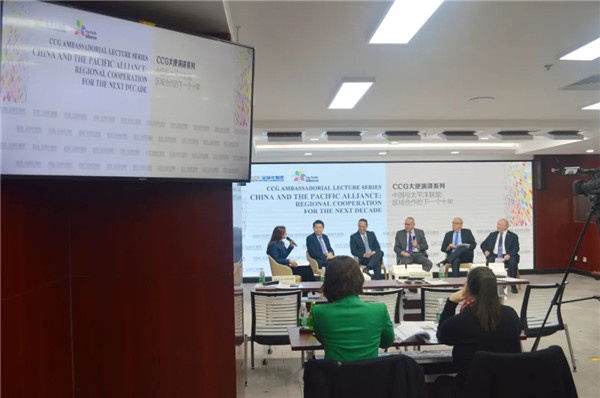

As one of the world’s top 100 non-governmental think tanks, CCG is committed to research in areas such as globalization, global governance, sustainable development, and promoting multilateral cooperation. CCG has established an effective communication and cooperation mechanism with embassies, international organizations, international think tanks and relevant institutions, and has become an important platform for policy interaction between China and other countries.


